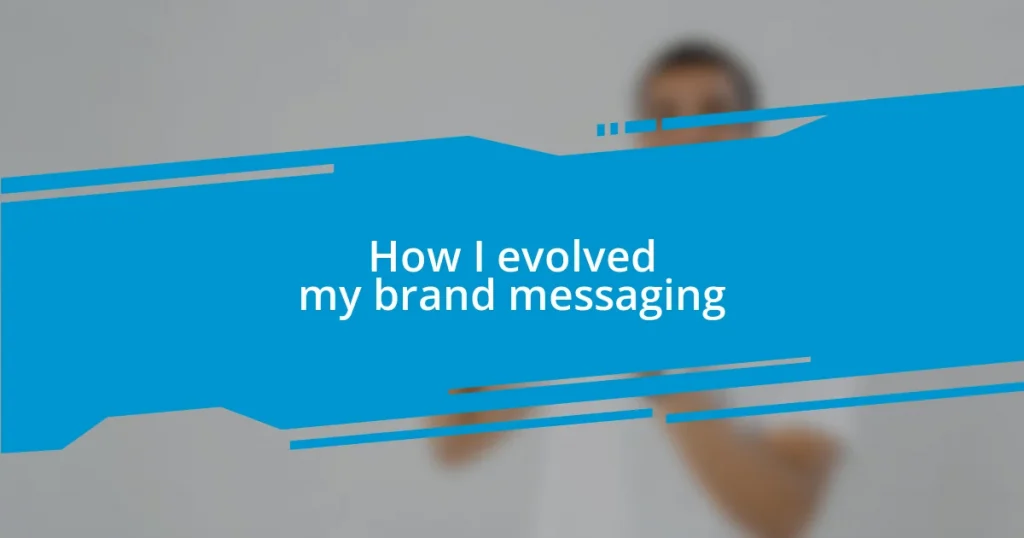Key takeaways:
- Effective brand messaging is rooted in understanding the audience’s emotions, desires, and pain points, ensuring relatability and connection.
- Analyzing brand perception through feedback is essential for refining messaging and overcoming misconceptions, leading to trust and loyalty.
- Developing a consistent brand voice and continuously testing messaging can significantly enhance engagement and clarify brand identity.
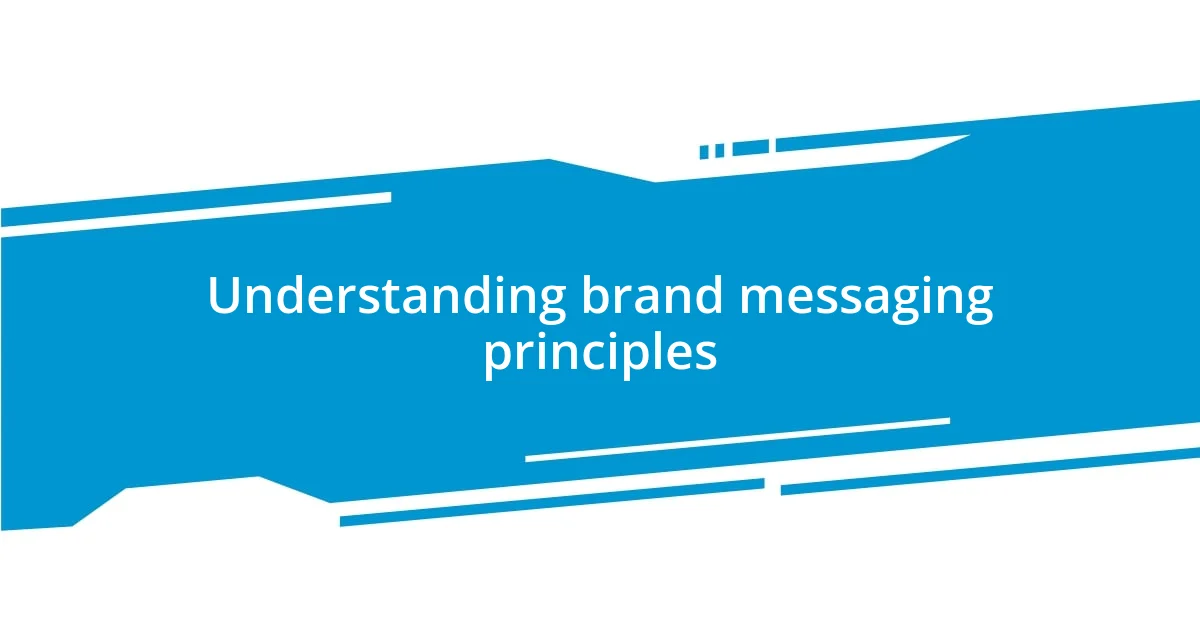
Understanding brand messaging principles
Brand messaging principles are foundational to creating a lasting impression. I recall when I first attempted to articulate my brand message clearly—it was like trying to capture lightning in a bottle. I realized that it’s not just about the words; it’s about the emotions and values behind them. How does your brand make people feel? This question is essential because genuine connection leads to loyalty.
I’ve noticed that effective brand messaging often stems from a deep understanding of your audience. During a branding workshop I attended, we were encouraged to develop customer personas. The exercise was eye-opening; placing myself in their shoes helped me understand their desires and pain points. It reinforced the idea that messaging must resonate with the audience’s experiences, making it relatable and compelling.
Consistency is another principle that I’ve learned the hard way. I recall a period when my messaging wavered across platforms. It confused my audience, and I lost some credibility. Now, I make a conscious effort to ensure that my messaging is consistent and aligns with my brand values everywhere. Isn’t it reassuring to know that, with the right principles, you can craft a narrative that truly shines?
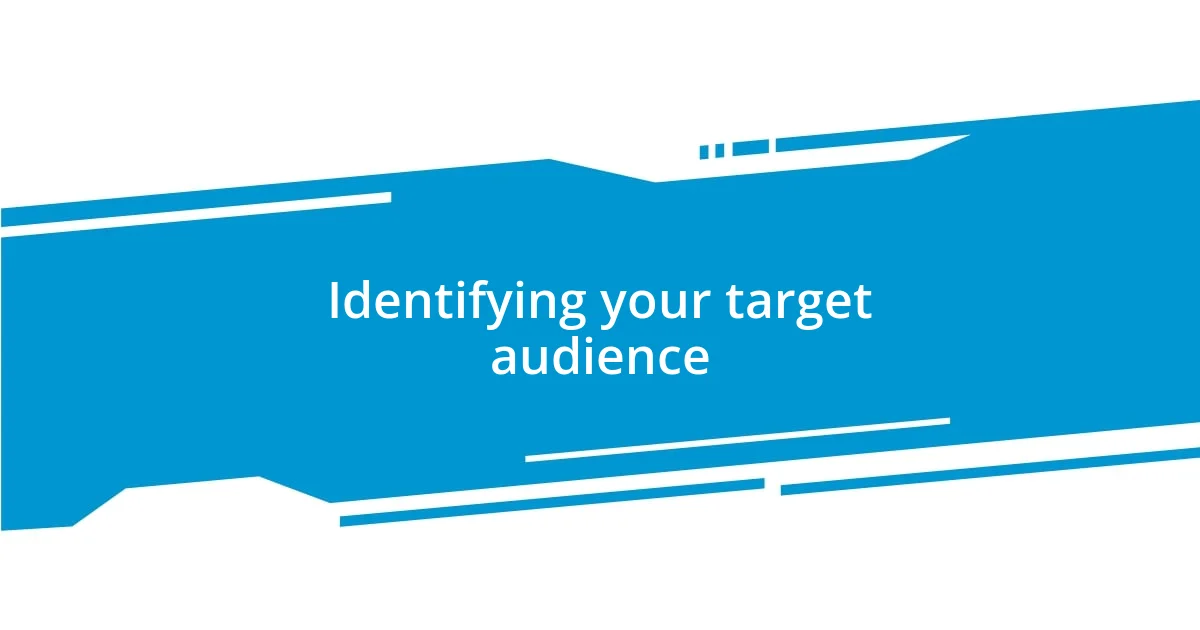
Identifying your target audience
Identifying your target audience can truly feel like uncovering a treasure chest of insights. In my journey, I remember going through a phase where I was casting my net too wide, trying to reach everyone. It was overwhelming and unfocused. When I finally began narrowing down my audience, it felt like a breath of fresh air. Understanding who my ideal customers were allowed me to tailor my messages specifically to their realities, making my brand feel more personal and engaged with their needs.
Here are some steps that helped me pinpoint my target audience effectively:
- Define demographics: Age, gender, occupation, and location; get specific about who your audience is.
- Explore psychographics: Understand their values, interests, and lifestyles. What motivates them?
- Analyze behavior: Pay attention to how they interact with your brand. What do they purchase? How do they communicate?
- Engage with your audience: Social media polls or direct conversations can illuminate who they truly are.
- Refine continuously: As you grow, your audience may evolve. Stay adaptable and responsive to these changes.
These strategies not only clarified my message but also fostered a genuine connection, making my brand feel like a trusted partner in my audience’s journey. It’s illuminating to see how this focused approach can drive impactful relationships.
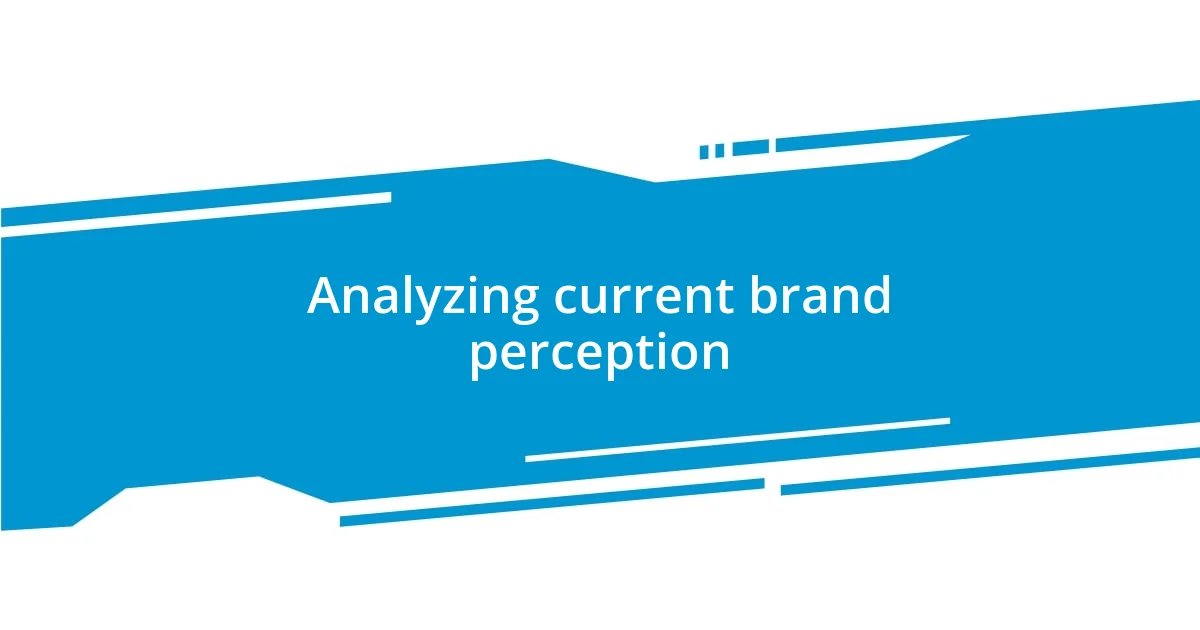
Analyzing current brand perception
Analyzing current brand perception has become an essential part of my branding process. When I first delved into this area, I was surprised by the disconnect between how I perceived my brand and how my audience did. Engaging in surveys and social media listening provided me with insights that stirred a range of emotions—from disappointment to enlightenment. It became clear that understanding current perceptions is critical to shaping a brand’s future narrative.
As I examined feedback, I felt a wave of realization wash over me. Many customers appreciated my brand’s ethics, but they found my messaging inconsistent and unclear. This juxtaposition felt like a wake-up call. It highlighted the need to not only cultivate a cohesive brand identity but also to actively listen to my audience. Embracing constructive criticism can be challenging, but it fuels meaningful evolution.
To give you a clearer picture, I’ve created a comparison table reflecting perceptions I discovered:
| Aspect | Previous Perception | Current Perception |
|---|---|---|
| Brand Messaging | Inconsistent | Clear and Cohesive |
| Audience Engagement | Detached | Responsive and Engaged |
| Emotional Connection | Neutral | Compassionate and Relatable |
This journey has taught me that perception is fluid, and actively seeking feedback can lead to impactful growth. I’ve learned to embrace the discomfort that comes with facing how my brand is seen, reminding me that every piece of feedback is an opportunity for refinement.
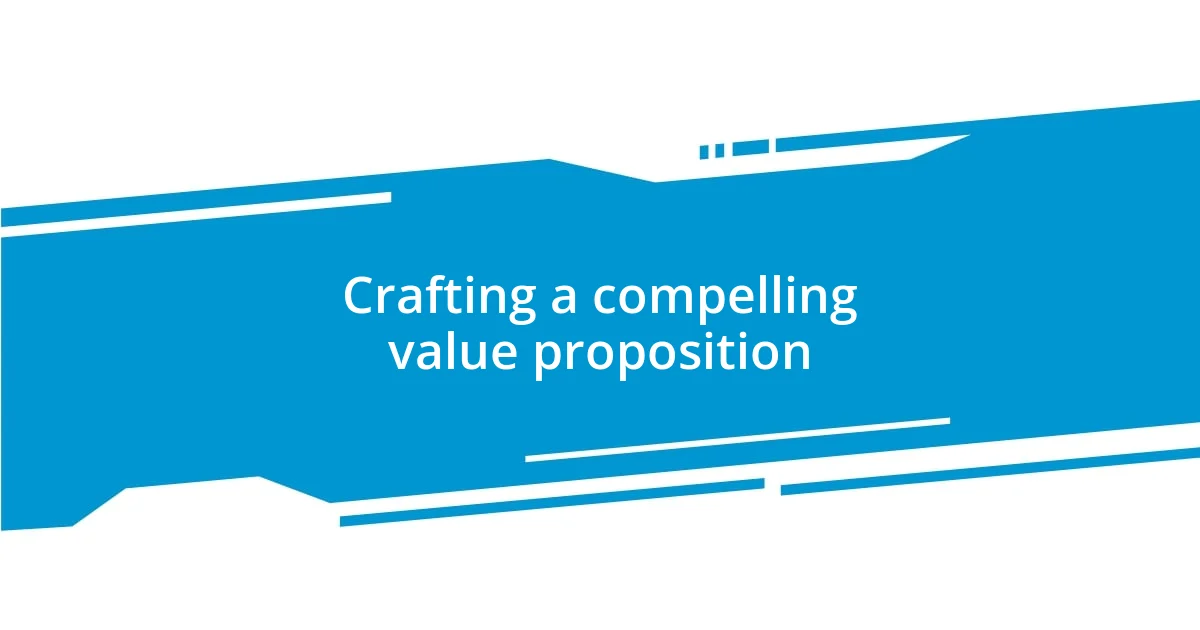
Crafting a compelling value proposition
Crafting a compelling value proposition is about articulating what makes your brand unique and necessary. When I was first developing mine, I found myself stuck in a loop of jargon-heavy statements that failed to resonate with my audience. It hit me—how could I expect my message to connect if it didn’t reflect the real value I offered? Simplifying my value proposition not only clarified my message, but it also sparked excitement within my brand narrative.
To truly understand the essence of my value proposition, I took a moment to reflect on my unique strengths and my audience’s most pressing needs. One realization that stood out was when a loyal customer shared how my product not only solved a problem but also made their life easier. This conversation shifted my perspective; I recognized the emotional impact of my brand and the connection we had built. It became clear that my value proposition needed to be framed not just around features, but around the transformational journey I was facilitating for my customers.
I’ve learned that a great value proposition answers a fundamental question: “What’s in it for me?” When I reframed my message to emphasize the benefits and outcomes my audience craved, I noticed a marked improvement in engagement and loyalty. Have you ever thought about how your product or service changes someone’s life? Reflecting on that can be transformative, ensuring your messaging is not just about what you offer, but about how you make a real difference. It’s this deeper connection that truly resonates with people.
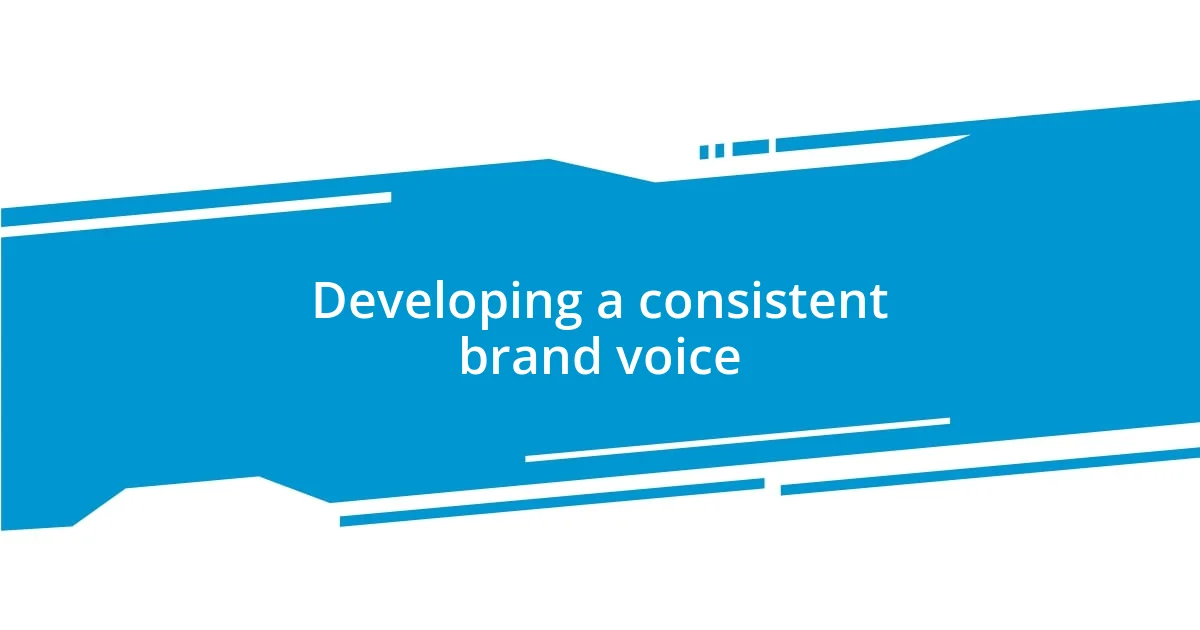
Developing a consistent brand voice
Developing a consistent brand voice was a journey that truly transformed my approach to messaging. Initially, my communication felt like a patchwork quilt, with each piece telling a different story. I remember one client once saying, “I feel like I’m talking to a different person every time.” That moment struck me—it emphasized how crucial it was to find a unified voice that resonated across all platforms.
I decided to delve into core adjectives that defined my brand. For me, words like “authentic,” “approachable,” and “enthusiastic” emerged as pillars of my identity. I used these descriptors as a compass, guiding not only my written content but also my tone in conversations and social media interactions. This was a significant transition from my previous haphazard style. Now, every piece of communication feels like it belongs to a family, contributing to a larger narrative.
I also found it helpful to create a style guide. It was a simple document that outlined my voice, including preferred language, tone, and examples of how to respond in various situations. The challenge was often there—the temptation to slip back into old habits was real. Yet, with time and practice, maintaining this consistent voice became second nature. Have you ever tried to establish a brand voice? It’s a rewarding exercise that not only strengthens your identity but fosters trust in your audience, making them feel more connected to your brand.
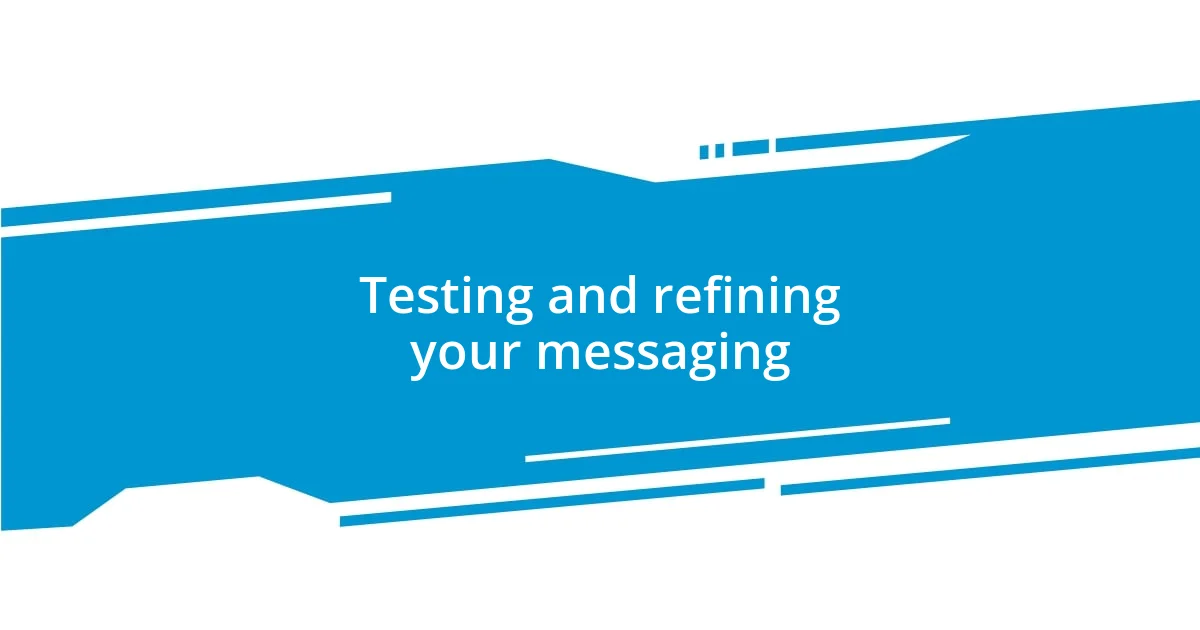
Testing and refining your messaging
Testing and refining your messaging is an ongoing cycle of discovery. I vividly remember the moment I sent out a revised email campaign, eager for feedback. The responses were eye-opening; while some loved the fresh tone, others found it overly casual. It struck me—how can I balance authenticity and professionalism in a way that resonates with everyone?
I started A/B testing my messages, presenting two different versions to see which one performed better. I implemented small tweaks, like varying the subject lines or changing my call-to-action phrases. Each time, I analyzed engagement metrics like open rates and click-throughs. I was amazed to see how even a slight adjustment could lead to a significant increase in interest. Have you experimented with A/B testing in your messaging? It’s fascinating how data can guide your intuition.
Incorporating live feedback sessions became invaluable for me too. I would gather a small group of loyal customers and present them with draft ideas. Their candid critiques helped me refocus my messaging, allowing me to see how they perceived my brand from an outsider’s perspective. Once, a customer shared how a previous tagline felt too vague, prompting me to think critically about clarity versus creativity. Finding that balance isn’t always easy, but those discussions deepened my understanding of what truly resonates with my audience and emphasized the importance of continual refinement.










